New Seattle Buddhist Teachers Tread Own Paths
Written by: Miles Yanick

Happy new teachers Bonnie Duran, Tim Geil and Keri Pederson, at Spirit Rock. Embracing them is Andre Alton Hardy, a former Seahawks player who is now an author, grad school student, and partner of Against the Stream co-guiding teacher JoAnna Harper. A photo including Brent Morton was not available for this story.
Photos by: Lillie Geil , Coren Lindfield , Yuen Lui , SIMS, Spirit Rock, Steve Wilhelm
This summer four Seattle-area practitioners completed a four-year teacher training in Buddhadharma and vipassana meditation, through Spirit Rock Meditation Center in California and Insight Meditation Society (IMS) in Massachusetts.
The four new Seattle-area teachers are Bonnie Duran, Tim Geil, Brent Morton, and Keri Pederson.
IMS and Spirit Rock are leading institutions in the evolution of insight or vipassana meditation in the United States. IMS, the older of the two, just celebrated its 40th anniversary. (Here’s a story about a Portland teacher, one of the founders, who attended that celebration.)
Together the two affiliated institutions created the teacher-training program as a way to formally authorize new teachers to carry forth and teach the dharma. This recent class was the sixth to complete the program since it started in 1984.
The training prepares trainees to assume a wide range of roles—from teaching intensive retreats to leading community-based sanghas to officiating weddings and funerals—in the tradition of the Theravada meditation masters of the forest monasteries, temples, and retreat centers of Thailand, Burma, and Sri Lanka.
The four-year program is rigorous and multi-faceted. Teachers-in-training participate in six-day intensive workshops three times a year at Spirit Rock, IMS, and the Insight Retreat Center in Scotts Valley, California. They also assist and teach at residential retreats, and receive ongoing one-on-one mentoring from senior teachers. Core teachers were Guy Armstrong, Andrea Fella, Gil Fronsdal, Joseph Goldstein, Trudy Goodman, Jack Kornfield, Phillip Moffitt, and Carol Wilson.
Twenty six people, from 30 to 60 years of age, were invited to complete the training. They came from around the country and from overseas.
Five were people of color. The program included a significant focus on race and diversity issues, and their implications for teachers and their sanghas.
One unique aspect of the trainee cadre was the number of trainees with children. Eleven trainees have children under 18, including six babies born over the course of the training.
Many practitioners do have children, and a teacher who can speak from that experience may have something unique to offer them.
Four new Seattle-based teachers
Bonnie Duran had to make time stretch to complete her teacher training, because she also has a more-than full time career as an associate professor at the University of Washington School of Social Work.
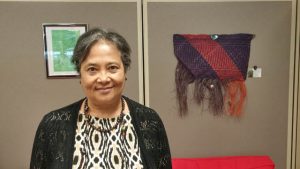
Bonnie Duran combines a rigorous career as an academic and work with the Native American community, with her dharma teaching.
As a Native American person, Duran is very active working with tribes and tribal organizations. She also has been co-teaching retreats around the United States, co-leads the People of Color and Allies Sangha in Seattle, and teaches long retreats at Insight Meditation Society and Spirit Rock Meditation Center.
Duran said the teacher training was powerful.
“It’s a very humbling experience to be part of this exquisite group of people devoted to the dharma,” she said. “It’s enlivening to be asked to share the dharma in a way that’s authentic to what the Buddha taught, and also resonates in 2016.”
Duran was sponsored by IMS co-founder Joseph Goldstein, and considers him one of her primary teachers. She had not considering teaching the dharma until he asked her, she said. She is still working with the difficult notion of being a “professional Buddhist.”
“Joseph was offering retreats in ‘Indian Country’ in the early 2000s,” she said. “He would have me sit next to him.”
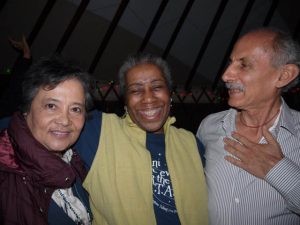
New teachers Bonnie Duran and DaRa Williams with Jack Kornfield, one of the three co-founders of Insight Meditation Society.
Duran added that she’s now looking to see where she can be of most benefit, and how she will balance working at the university with dharma teaching in a larger sphere.
“I am really committed. I feel huge gratitude for IMS and Spirit Rock for the training, with the most exquisite dharma teachers in the world,” she said. “The dharma has been my healing and greatest medicine. I hope to share that in Indian Country and other places where I’m most needed, and with as many people as possible.”
Duran will be one of the team of six teachers leading the sixth Dedicated Practitioners Program, offered by Spirit Rock.
Tim Geil started practicing the dharma in 1996, and started teaching a decade later under Rodney Smith’s guidance.
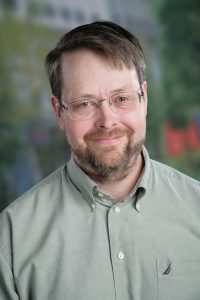
Teacher Tim Geil appreciates the support he has received from teachers.
When Smith recommended Geil for the teacher training, Geil was reluctant at first—the timing did not seem to fit with the commitments in his life at the time. But he eventually accepted, and the timing turned out to be just right: SIMS would be in need of a new guiding teacher by the time he was finished.
Geil spoke gratefully of the support he felt from the teachers.
“They very much wanted us to succeed,” said Geil. “There was an intangible transmission that occurred through their modeling and encouragement, beyond their knowledge and skills.”
The teacher training included studying the suttas, the original teachings of the Buddha, and learning about the various traditions included lineages represented under the broader IMS/Spirit Rock umbrella. For Geil, learning about other vipassana traditions and lineages helped him clarify his own voice and at the same time appreciate and be open to others’ voices.
This embracing is important for teachers, he said, as students bring with them all of these perspectives to the practice.
Now Geil serves as interim guiding co-teacher of SIMS, alongside Tuere Sala, as Smith moves toward retirement. Sala is a graduate of the Community Dharma Leaders Program at Spirit Rock and also leads a sitting group on Seattle’s Capitol Hill.
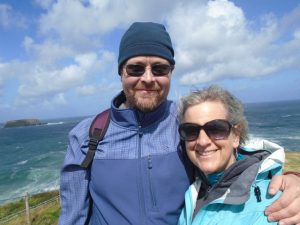
Tim Geil and his wife Anne Geil, during a 2016 trip to Ireland and Wales.
As Geil said in the closing ceremony of the teacher training, his intention as a teacher is to always teach from his own leading edge, where he is meeting his own practice.
“You must know where you stick, where you’re not being dharmic,” he said. “You must be unflinchingly honest with yourself.”
Brent Morton co-operates a Seattle organization called Sound Mindfulness Group, which offers somatic therapy work, mindfulness-based stress reduction, and nutrition counseling.
On part of the group’s website is the motto “You can’t stop the waves but you can learn to surf,” followed by “Sound Mindfulness Group providers create the supportive atmosphere necessary for you to face the challenges of life with grace.”
We were unable to reach Morton for this article.
Keri Pederson’s dharma practice evolved out of an interest in yoga when she was in her 20s.
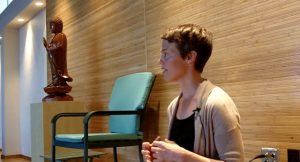
Keri Pederson teaching at Seattle Insight Meditation Society.
From the start, she had a strong visceral response to the dharma and to sitting practice.
Pederson began sitting and studying the dharma , and was inspired to attend more than half a dozen retreats in the tradition of Burmese master S.N. Goenka. She also worked for over a year as the kitchen manager at Cloud Mountain Retreat Center in Washington state, where she was able to learn from teachers from a variety of traditions.
Pederson eventually made her way back to Seattle, where she became involved with Seattle Insight Meditation Society (SIMS). Although she did not aspire to teach initially, in 2007 SIMS Founding Teacher Smith invited her to assist in leading retreats and classes. When Smith recommended Pederson for the teacher training, she accepted this as a next step on her path and an opportunity to deepen her practice.
Pederson currently leads a practice group for young adults called Under 40, which meets at SIMS twice a month .
“I found the practice in my 20s, when many of my peers were not involved in dharma practice,” she said. “I now want to support those who are also starting early but who might feel somewhat isolated .”
Pederson also is leading a number of retreats at Cloud Mountain next year, including two weekend retreats , a young-adult retreat in July, and a week-long retreat with Narayan Liebenson and Tim Geil in early September.
Deep training taps many dharma roots
The training prepared participants to assume the role of teacher and to meet the challenges this presents.
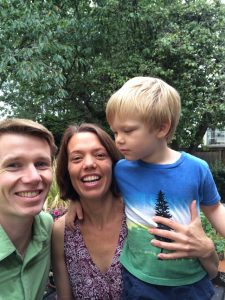
Keri Pederson hiking in the mountains with her husband Coren Lindfield and son Jasper Lindfield.
One challenge can be how to skillfully navigate the complex student-teacher relationship and the power dynamics the relationship can entail. Another can be how to maintain the strong intention required to hold the silence on retreat, while staying receptive to the emotions that come up for yogis when defenses are down.
Much of this preparation was experiential: Teachers-in-training spent weeks each year assisting or co-teaching on retreats with senior teachers, where they gained confidence sitting in the teaching seat, giving talks, and conducting interviews.
But when asked what aspect of the training benefited them most, these new teachers said that was each other. Trainees lived together during the three six-day intensives each year. They cooked, ate, and did chores together. Spouses, partners, and children even joined them at times.
Pederson was one of those with young children, because her son was born during the first year of the training.
In the trusting space these teachers-to-be created, they were able to share openly their questions, challenges, and passions about the practice and transmission they were receiving.
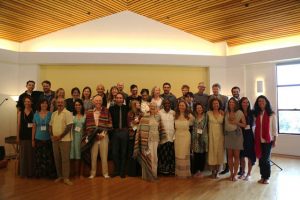
Four from Washington were among the 26 new teachers, of many backgrounds and origins, who graduated from the Spirit Rock/IMS teacher training program.
“I thought at first that this would be a side benefit, but it was the main benefit,” Pederson said. “More and more over the course of the program, the students were learning from each other and directing the teaching.”
As Pederson puts it, the teachers conveyed “a confidence that the dharma will unfold in each individual, in the way that is expressly unique to them.”
The beginning of these 26 new teachers’ careers aligns with the paring back or retirement of a number of senior teachers in this Western vipassana tradition. Some of the new teachers may become guiding teachers, join teacher’s councils, lead more retreats at the major centers, or create their own practice communities.
